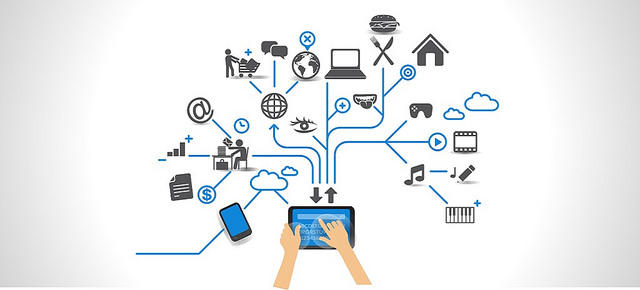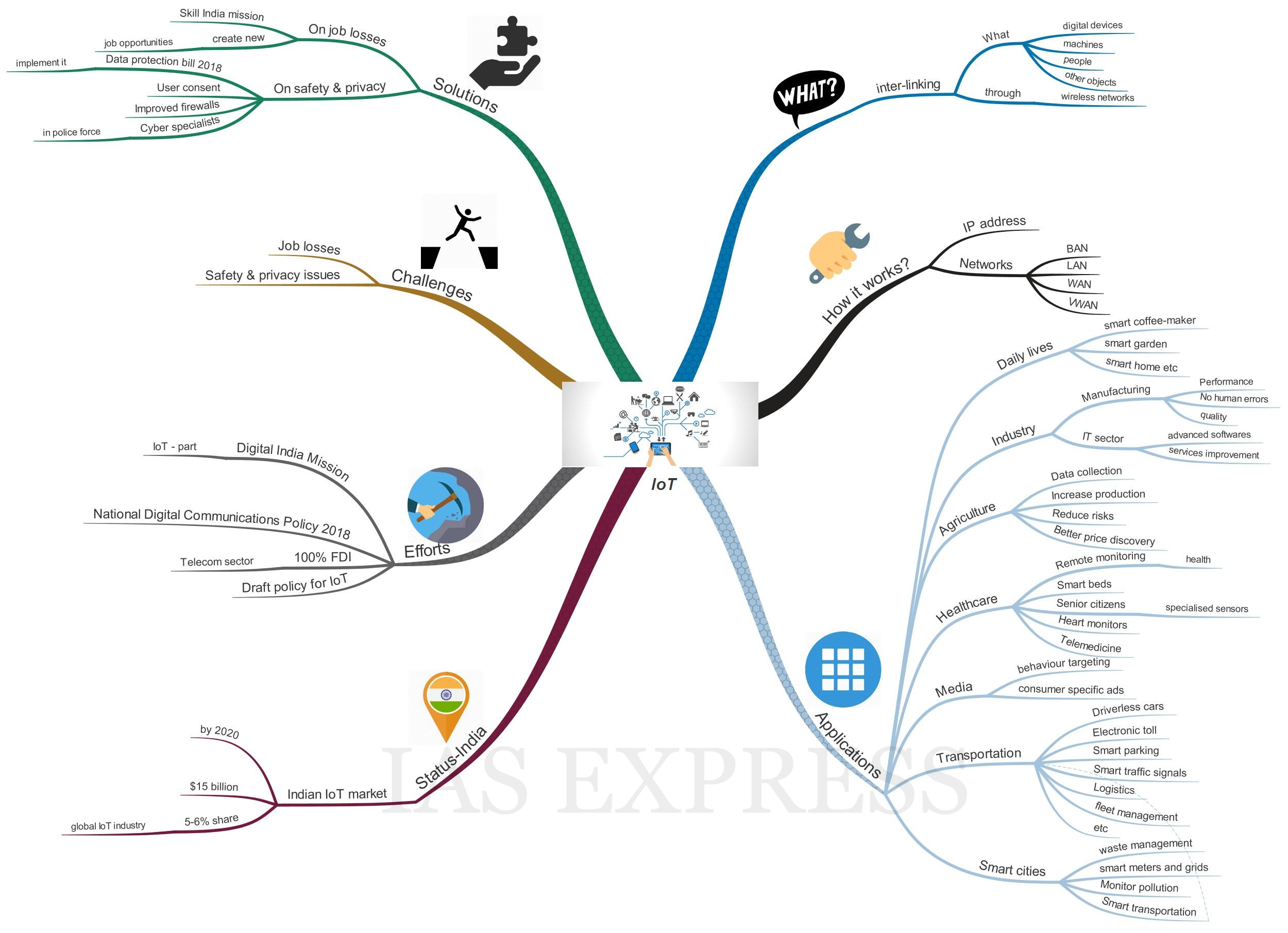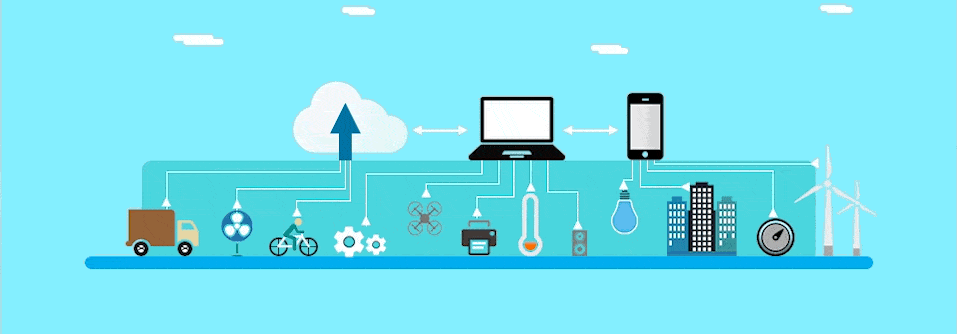Internet of Things (IoT) – Examples

From Current Affairs Notes for UPSC » Editorials & In-depths » This topic
IAS EXPRESS Vs UPSC Prelims 2024: 85+ questions reflected
The Internet of Things (IoT) can become a game changer that India needs as this concept is set to disrupt almost every sector in India from smart cities and telecom to manufacturing and mobility. The rapid development in the IoT leads to the starting of the next digital revolution. However, the Internet of Things throws up many challenges like data safety and privacy. So India needs to push ahead with this concept to kick-start the radical development process with the proper regulatory framework in place to govern IoT.

What is the Internet of Things (IoT)?
- Internet of Things is the inter-linking of digital devices, machines, people and other objects with each other through wireless networks.
- It enables anything and everything to connect and communicate with each other.
- It is the future internet. Because the first version of the internet was about data created by the internet. The next version is about the data created by things.
How does it work?
- Anything that can be connected, will be connected in IoT.
- Any device that has on/off switch can be a part of the IoT.
- Most often the connected devices will have an I.P address. With Internet Protocol Version 6 (IPv6), allocating IP addresses to billions of devices has never been so much easier.
- Examples of things which can be connected to the internet include
- Connected wearables – Smart glasses, Smartwatches, fitness bands etc.
- Connected Homes – linking household appliances to the network.
- Connected cars – Vehicles that are connected to the internet.
- Connected cities – Connected traffic signals, Smart metres which analyse usage of water, gas, electricity etc, Smart bins which give signals when they need to be emptied etc.
- Different networks shall be connected to each other to provide inter-connectivity between different things. For example,
- BAN (Body Area Network): Wearables.
- LAN (Local Area Network): Smart home.
- WAN (Wide Area Network): Connected car.
- VWAN (Very wide area network): Smart city.
What are the applications of the Internet of Things?
Daily Lives
- There can be several IoT examples in our day to day lives.
- For instance, a person returning home after his office hours can call his coffee-maker to make the coffee ready when he reaches home.
- IoT can be used to water the plants of the garden whenever the moisture level falls below a certain limit.
- We can utilise IoT to convert a normal home into a smart home.
- It can be used in energy efficiency in homes and office places.
Industry
- IoT’s effects may vary from industry to industry based on its utilisation.
- In the manufacturing sector, IoT can be utilised to enhance performance, minimise human-induced errors and consequently improve the overall quality of the manufactured products.
- In the IT sector, utilisation of IoT can result in improvement in services, development of more advanced software and digital services etc.
Agriculture
- IoT can be utilised to collect data about rainfall, soil moisture, soil nutrients, pest infestation etc.
- It can assist in making informed decisions to increase agricultural production as well as reducing the risks of crop failures etc.
- It can help make agriculture profitable with better price-discovery for farmers through smart techniques.
Healthcare
- Medical practitioners and doctors can use IoT to remotely monitor the patient’s health.
- Smart beds can detect when the patient is trying to get up, his abnormal activities, etc.
- Specialised sensors for senior citizens can be developed with the help of IoT.
- Wearable heart monitors can help monitor the heartbeats, blood pressure of patients etc.
- It can revolutionise telemedicine applications.
Media
Corporate media houses can utilise IoT to monitor consumer habits for the purpose of behaviour targeting = display consumer specific advertisements. They can utilise Big Data and Data Mining for this purpose.
Transportation
- IoT can be used in driverless cars and improve the intra-vehicular communication to reduce accidents and traffic jams etc.
- We can use it for electronic toll collections, smart parking, smart traffic management etc.
- IoT can be useful in logistics, fleet management, safety assistance etc.
Smart cities
- IoT can be utilised in solid waste management systems to improve the cleanliness of the city.
- Smart meters and power grids can improve energy efficiency and reduce transmission loss.
- IoT can be used to track the air pollution levels in the cities and give warning when it breaches the prescribed safety levels.
- IoT can also be used to develop smart transportation systems to minimise congestion in the cities.
What is the status of IoT in India?
- Many countries have already begun reaping the rewards of investing in IoT based infrastructure.
- Indian IoT market is expected to reach $15 billion by 2020 and accounts for 5% of the global market.
- Investing in IoT will provide a major boost to our economy on par with global leaders and it will also attract investments, create jobs and improve public infrastructure in the country.
What are the measures taken by the government to promote IoT?
- The central government launched a plan to utilise IoT as part of the Digital India mission.
- The government came up with National Digital Communications Policy 2018 to satisfy the modern realities of the telecom such as 5g technology, Internet of Things (IoT), Machine to Machine (M2M) communication etc.
- The government also allowed 100% FDI in the telecom sector. This will help in the development and growth of the IoT.
- Department of Electronics and Information Technology (DeITY) has published a draft policy for IoT. The target is to establish an IoT market of USD 15 billion by 2020 and having a share of 5-6% in the global IoT industry.
What are the challenges or concerns with the IoT?
Job losses
- The IoT application in industries can cause loss of skilled and semi-skilled jobs in manufacturing as well as service sectors.
- There can be considerable unemployment issues with automation in the automobile manufacturing units.
- Internet of Things (IoT) involves Data Mining, use of big data etc. which causes concern over the safety and privacy of citizens.
- Sharing and selling of personal data without consent by IT and internet companies has become a major issue.
- There are also concerns over the potential for increased government surveillance and the consequent encroachment of civil rights to suppress dissent or marginalise communities.
- Furthermore, ransomware attacks and hacking of bank accounts are also causing a big safety issue.
- These issues may further increase due to the faster growth of IoT.
What are the solutions?
On Job losses
- We need to skill our labour force to address the challenges arising due to IoT.
- Skill India mission can provide the platform for their skill development.
- At the same time, there is a need to create new job opportunities in other sectors to absorb the extra labour force.
On Safety & Privacy issues
- We need to have the Data Privacy Legislation and policy frameworks to address these issues. The draft personal data protection bill 2018 as recommended by BN Srikrishna Committee may help in this regard and hence should be enacted as soon as possible.
- Many regulations across the world need IoT companies to collect user consent before collecting the said data. India also needs to implement such regulations.
- Also, there is a need to improve the firewalls, develop software to address the issues caused by the growth of IoT.
- We need to promote awareness and best practices among the users in order to minimise the associated risks pertaining to IoT.
- Moreover, we need to improve the cyber policing by employing and skilling the professionals to deal with these issues. Dedicated cyber specialist personnel can be created in our policing system for this purpose.
Updates
Narrowband (NB)-IoT technology
The Internet of things (IoT) has brought enormous benefits to rural villages and agriculture in India. However, there are hurdles in connectivity and infrastructure. Satellite-based networks can reduce the connectivity gap in remote areas but can be costly due to the equipment needed by both consumers and producers. Narrowband (NB)-IoT technology may help reduce the gap between remote areas and the benefits of Internet connectivity. As its name implies, NB-IoT utilizes a single, narrowband frequency (200 kilohertz), that reduces transmission rates yet enables several users to concurrently connect over an extensive area. The technology is low-cost for users and works on nearly any mobile phone.
If you like this post, please share your feedback in the comments section below so that we will upload more posts like this.



Very good content … Thank you so much
You’re welcome. Thanks for the positive feedback.